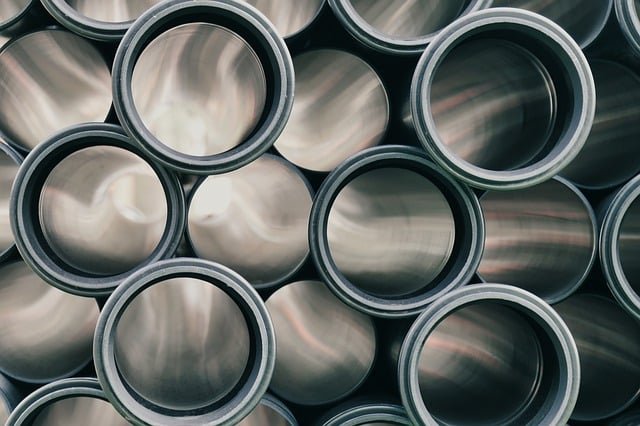-
Table of Contents
- Advancements in Plastic Composites
- Recyclability and Sustainability Potential
- Versatility in Material Applications
- Durability and Impact Resistance
- Safety Enhancements in Vehicle Construction
- Cost-Effectiveness and Manufacturing Efficiency
- Reduced Emissions and Environmental Impact
- Design Flexibility and Innovation
- Corrosion Resistance for Longevity
- Fuel Efficiency Through Lightweight Design
Advancements in Plastic Composites
Advancements in plastic composites have revolutionized various industries, and the transportation sector is no exception. These materials, formed by combining plastic polymers with reinforcing agents like glass or carbon fibers, offer a unique blend of strength, lightweight, and design flexibility, making them increasingly attractive for automotive, aerospace, and marine applications.
One of the most significant benefits of utilizing plastic composites in transportation is their exceptional strength-to-weight ratio. Compared to traditional materials like steel or aluminum, composites can achieve comparable or even superior strength at a fraction of the weight. This weight reduction translates directly into improved fuel efficiency, a crucial factor in an era of growing environmental concerns and volatile fuel prices. Furthermore, the lightweight nature of composites contributes to enhanced vehicle performance, allowing for faster acceleration, shorter braking distances, and improved handling.
Beyond fuel efficiency and performance, plastic composites offer significant advantages in design and manufacturing. Their malleability allows engineers to create complex shapes and intricate designs with relative ease, fostering innovation in vehicle aesthetics and aerodynamics. This design flexibility extends to the manufacturing process as well. Composites can be molded into large, intricate parts, reducing the need for multiple components and assembly steps. This streamlined manufacturing process not only saves time and costs but also contributes to a more sustainable production cycle by minimizing material waste and energy consumption.
Moreover, plastic composites exhibit excellent resistance to corrosion, chemicals, and fatigue, making them exceptionally durable and well-suited for demanding operating environments. Unlike metals, composites are impervious to rust and corrosion, reducing maintenance requirements and extending the lifespan of vehicle components. This durability translates into long-term cost savings for both manufacturers and consumers.
In conclusion, the advancements in plastic composites have ushered in a new era of possibilities for the transportation industry. Their exceptional strength-to-weight ratio, design flexibility, manufacturing efficiency, and durability make them a compelling alternative to traditional materials. As research and development in this field continue to advance, we can expect even more innovative applications of plastic composites, further enhancing the performance, sustainability, and overall efficiency of the vehicles we rely on.
Recyclability and Sustainability Potential
The transportation industry, a cornerstone of global commerce and connectivity, is on a quest for sustainable solutions. As we navigate concerns about resource depletion and environmental impact, plastics have emerged as a material with significant potential in this sector. While often perceived solely through the lens of their environmental impact, plastics offer a compelling narrative in the realm of recyclability and sustainability, particularly within the transportation industry.
One of the most compelling arguments for plastics in transportation lies in their exceptional recyclability. Many types of plastics used in vehicles, from interior components to exterior parts, are highly recyclable. This inherent characteristic allows for the recovery and reprocessing of these materials at the end of their lifespan, reducing the need for virgin resources and minimizing waste. For instance, polypropylene, a common plastic in car bumpers and dashboards, can be melted down and reformed into new products, embodying the principles of a circular economy.
Furthermore, the lightweight nature of plastics contributes significantly to fuel efficiency in vehicles. By replacing heavier materials like metal, plastics reduce the overall weight of vehicles, leading to lower fuel consumption and reduced greenhouse gas emissions. This factor is particularly crucial in the automotive industry, where even a small reduction in weight can translate to significant fuel savings over the vehicle’s lifespan. This inherent advantage of plastics aligns perfectly with the global push towards sustainable transportation solutions.
Moreover, advancements in plastic recycling technologies are constantly expanding the possibilities for their reuse in the transportation sector. Innovative processes are emerging that allow for the high-quality recycling of mixed plastic streams, which were previously challenging to recycle. This means that a wider range of plastic components from end-of-life vehicles can be effectively recycled and incorporated into new vehicles or other applications, further reducing the industry’s environmental footprint.
In conclusion, while the environmental impact of plastics is a complex issue, their role in the transportation industry deserves a nuanced perspective. Their recyclability, coupled with their contribution to fuel efficiency, positions them as materials with significant sustainability potential. As recycling technologies continue to evolve and the industry embraces circular economy principles, plastics are poised to play an even more integral role in shaping a more sustainable future for transportation. The key lies in responsible production, consumption, and end-of-life management, ensuring that the benefits of plastics are maximized while minimizing their environmental impact.
Versatility in Material Applications
The transportation industry thrives on innovation, constantly seeking materials that enhance efficiency, safety, and sustainability. In this pursuit, plastics have emerged as a transformative force, offering a remarkable degree of versatility in material applications. This adaptability stems from the inherent properties of plastics, which can be tailored to meet specific needs.
One of the key advantages of plastics is their exceptional strength-to-weight ratio. Compared to traditional materials like metal, plastics offer significant weight reductions without compromising structural integrity. This translates into improved fuel efficiency, a crucial factor in the transportation sector’s endeavor to reduce its environmental footprint. For instance, the use of lightweight plastic composites in aircraft construction has led to a notable decrease in fuel consumption and greenhouse gas emissions.
Furthermore, plastics exhibit remarkable resistance to corrosion and chemicals, making them ideal for applications in demanding environments. Unlike metals, which are susceptible to rust and degradation, plastics maintain their structural integrity even when exposed to moisture, salt, and various chemicals. This durability is particularly valuable in marine and automotive applications, where components are constantly subjected to harsh conditions. Moreover, the use of plastics in these sectors translates into reduced maintenance requirements and a longer lifespan for vehicles and vessels.
Beyond their structural capabilities, plastics offer unparalleled design flexibility. They can be easily molded into complex shapes and intricate designs, allowing engineers to push the boundaries of innovation. This versatility is evident in the automotive industry, where plastics are used to create aerodynamic car bodies, intricate interior components, and even high-performance engine parts. This design freedom not only enhances aesthetics but also contributes to improved vehicle performance and safety.
In conclusion, the versatility of plastics in material applications has revolutionized the transportation industry. Their exceptional strength-to-weight ratio, corrosion resistance, and design flexibility have paved the way for lighter, more fuel-efficient, and durable vehicles, aircraft, and vessels. As the industry continues to prioritize sustainability and innovation, plastics will undoubtedly play an even more prominent role in shaping the future of transportation.
Durability and Impact Resistance
The transportation industry demands materials that can withstand the rigors of travel, from bumpy roads to harsh weather conditions. In this regard, plastics have emerged as a game-changer, offering a unique blend of durability and impact resistance that traditional materials often struggle to match. This inherent strength stems from the molecular structure of plastics, which allows them to flex and bend under pressure without breaking. This flexibility is crucial in absorbing shocks and vibrations, protecting valuable cargo and passengers alike.
Furthermore, the impact resistance of plastics translates to enhanced safety on the roads. In the unfortunate event of a collision, plastic components are less likely to shatter or splinter, reducing the risk of sharp debris. This characteristic is particularly important in the construction of vehicle interiors, where plastic dashboards and door panels can play a vital role in minimizing injuries during an accident.
Moreover, the durability of plastics extends beyond their ability to withstand impacts. They are inherently resistant to corrosion, a common problem that plagues metal components in vehicles. This resistance translates to a longer lifespan for plastic parts, reducing the need for frequent replacements and ultimately contributing to the sustainability of the transportation industry. This longevity is further amplified by the fact that plastics are impervious to moisture, making them ideal for use in undercarriage components and other areas exposed to the elements.
In addition to their resilience against corrosion and moisture, plastics also exhibit excellent resistance to chemicals and UV radiation. This resistance ensures that plastic components maintain their structural integrity and appearance even after prolonged exposure to harsh sunlight, road salts, and other environmental factors. This ability to withstand degradation is crucial in maintaining the aesthetic appeal of vehicles, as plastic bumpers, grilles, and trim retain their color and shine for extended periods.
In conclusion, the use of plastics in the transportation industry offers a compelling combination of durability and impact resistance. These properties translate to safer vehicles, reduced maintenance costs, and a lower environmental footprint. As the industry continues to innovate, we can expect to see even more applications for plastics, further solidifying their role as essential materials in shaping the future of transportation.
Safety Enhancements in Vehicle Construction

The transportation industry is in a constant state of evolution, perpetually seeking innovations that enhance safety, efficiency, and sustainability. One such innovation that has revolutionized vehicle construction and significantly bolstered safety enhancements is the use of plastics. While traditionally associated with consumer goods, plastics have steadily gained prominence in automotive engineering due to their unique properties that directly translate into tangible safety benefits.
One of the most significant contributions of plastics to vehicle safety lies in their exceptional energy absorption capabilities. In the unfortunate event of a collision, vehicles constructed with plastic components can effectively dissipate impact energy, mitigating the forces transmitted to the occupants. This characteristic is particularly crucial in crumple zones, strategically engineered sections of the vehicle designed to deform upon impact, absorbing and redirecting energy away from the passenger compartment. Furthermore, the lightweight nature of plastics plays a pivotal role in enhancing fuel efficiency. By reducing the overall weight of the vehicle, plastics contribute to lower fuel consumption and consequently, a reduction in greenhouse gas emissions. This inherent advantage aligns with the growing emphasis on environmental sustainability within the transportation sector.
Moreover, the versatility of plastics allows for intricate designs and complex geometries that would be challenging, if not impossible, to achieve with traditional materials. This design flexibility enables engineers to create components optimized for specific safety functions, such as airbags, seatbelts, and child restraint systems. The resilience of plastics further enhances their suitability for safety-critical applications. Resistant to corrosion, chemicals, and weathering, plastics ensure the longevity and reliability of safety components, even in harsh operating environments. This durability translates into reduced maintenance requirements and a longer lifespan for these critical safety features.
In conclusion, the integration of plastics in vehicle construction has ushered in a new era of safety enhancements in the transportation industry. Their exceptional energy absorption properties, lightweight nature, design versatility, and inherent resilience make them indispensable in creating safer, more efficient, and environmentally responsible vehicles. As automotive technology continues to advance, the role of plastics in shaping the future of transportation safety is undeniable. Their ongoing contributions will undoubtedly pave the way for even greater advancements in passenger protection and overall vehicle safety.
Cost-Effectiveness and Manufacturing Efficiency
The transportation industry, a cornerstone of global trade and connectivity, is in a perpetual quest for materials that enhance efficiency while minimizing costs. Plastics, with their remarkable versatility and economic advantages, have emerged as a transformative force in this domain. Their cost-effectiveness and contributions to manufacturing efficiency have become increasingly significant, reshaping the way vehicles are designed, manufactured, and operated.
One of the most compelling arguments for plastics in transportation lies in their exceptional cost-effectiveness. Compared to traditional materials like metal, plastics offer significant cost savings throughout the manufacturing process. Their lightweight nature translates into reduced material consumption, lowering raw material expenses. Moreover, the ease with which plastics can be molded into complex shapes simplifies manufacturing, requiring less energy and labor compared to metal fabrication. This inherent efficiency translates into lower production costs, making vehicles more affordable for both manufacturers and consumers.
Furthermore, the manufacturing efficiency offered by plastics is unparalleled in the transportation industry. Plastics lend themselves well to high-volume production methods, such as injection molding, enabling manufacturers to produce components quickly and consistently. This accelerated production cycle, coupled with reduced tooling costs, contributes to shorter lead times and increased overall productivity. The ability to create intricate designs with ease allows for the integration of multiple functions into single components, streamlining assembly processes and reducing the need for numerous fasteners and joints.
Beyond their cost and manufacturing advantages, plastics offer a range of properties that enhance vehicle performance and efficiency. Their inherent corrosion resistance eliminates the need for heavy and expensive anti-corrosive coatings, further reducing weight and cost. Additionally, the use of plastics in interior components, such as dashboards and door panels, contributes to noise reduction and improved insulation, enhancing passenger comfort and reducing the need for additional sound-dampening materials.
In conclusion, the adoption of plastics in the transportation industry is driven by a compelling combination of cost-effectiveness and manufacturing efficiency. Their lightweight nature, ease of fabrication, and suitability for high-volume production methods translate into significant cost savings throughout the vehicle lifecycle. Moreover, their ability to enhance fuel efficiency, reduce noise, and resist corrosion further solidifies their position as indispensable materials in modern transportation. As the industry continues to evolve, the innovative use of plastics will undoubtedly play a pivotal role in shaping the future of mobility.
Reduced Emissions and Environmental Impact
The transportation industry, a cornerstone of global connectivity and economic activity, is undergoing a significant transformation as it seeks to minimize its environmental footprint. At the forefront of this evolution is the strategic use of plastics, a material often misconstrued for its environmental impact. While it’s true that irresponsible plastic disposal contributes to pollution, the innovative use of plastics in transportation offers a compelling narrative of sustainability, particularly in the realm of reduced emissions.
One of the most impactful contributions of plastics lies in their ability to drastically reduce the weight of vehicles. Lighter vehicles, in turn, require less fuel to operate, leading to a tangible decrease in greenhouse gas emissions. This principle is evident in the increasing use of high-strength, lightweight plastics in car components such as bumpers, dashboards, and even structural parts. These plastic alternatives, often lighter than traditional materials like metal, contribute significantly to improved fuel efficiency, translating to fewer emissions released into the atmosphere over the vehicle’s lifespan.
Furthermore, the inherent durability and corrosion resistance of plastics play a crucial role in extending the lifespan of vehicles. Unlike metals, which are susceptible to rust and degradation, plastics can withstand harsh weather conditions and resist the corrosive effects of road salts and chemicals. This longevity translates to a reduced need for vehicle replacements, a process that carries a substantial environmental burden in terms of resource extraction, manufacturing, and disposal. By extending the lifespan of vehicles, plastics indirectly contribute to a reduction in the overall carbon footprint associated with vehicle production and disposal.
Beyond vehicle manufacturing, plastics are instrumental in enhancing the efficiency of transportation infrastructure. High-performance plastics are increasingly used in road construction, where they improve the durability and longevity of road surfaces. These durable road surfaces require less frequent repairs and replacements, minimizing the need for resource-intensive maintenance activities that contribute to emissions. Moreover, the use of plastics in noise barriers and traffic management systems further contributes to a reduction in noise pollution and traffic congestion, both of which have implications for fuel consumption and emissions.
In conclusion, while the environmental impact of plastics is a complex issue, their strategic use in the transportation industry presents a compelling case for their role in a sustainable future. By enabling the production of lighter, more fuel-efficient vehicles and contributing to more durable and efficient transportation infrastructure, plastics are playing a crucial role in mitigating the environmental impact of transportation. As we continue to innovate and explore new applications for plastics in this sector, it’s essential to adopt a balanced perspective that acknowledges both the challenges and opportunities presented by this versatile material.
Design Flexibility and Innovation
The transportation industry is in a constant state of evolution, perpetually seeking ways to enhance efficiency, safety, and sustainability. In this pursuit, plastics have emerged as a transformative material, offering a unique blend of properties that cater to the industry’s diverse needs. One of the most compelling advantages of plastics lies in their unparalleled design flexibility and capacity to drive innovation.
Unlike traditional materials like metal, plastics afford designers and engineers an expansive canvas for creativity. Their malleability allows for intricate shapes and complex geometries, enabling the creation of lightweight yet robust components that were previously inconceivable. This freedom from design constraints translates into vehicles with improved aerodynamics, reducing drag and consequently enhancing fuel efficiency. Moreover, the ability to mold plastics into intricate designs facilitates the integration of multiple functions into a single part, streamlining assembly processes and reducing overall vehicle weight.
Furthermore, the inherent versatility of plastics empowers manufacturers to tailor material properties to specific applications. Need a component that can withstand extreme temperatures under the hood? High-performance plastics offer exceptional heat resistance. Looking for materials to enhance passenger comfort? Plastics can be engineered to dampen vibrations and reduce noise levels within the cabin. This adaptability extends beyond performance, encompassing aesthetics as well. Plastics can be easily molded into various textures and finishes, allowing manufacturers to create visually appealing interiors and exteriors that align with evolving consumer preferences.
The use of plastics in transportation extends far beyond aesthetics and functionality; it plays a crucial role in advancing safety features. The energy-absorbing properties of certain plastics make them ideal for use in crumple zones, effectively dissipating impact energy during collisions and enhancing passenger safety. Additionally, the transparency of certain plastics allows for the creation of larger windows and windshields, improving visibility for drivers and ultimately contributing to safer driving conditions.
In conclusion, the design flexibility and innovation fostered by plastics are reshaping the landscape of the transportation industry. From enhancing fuel efficiency and safety to enabling the creation of aesthetically pleasing and functional components, plastics are proving to be an indispensable material in the quest for smarter, safer, and more sustainable transportation solutions. As technology continues to advance, we can expect even more innovative applications of plastics, further solidifying their role as a cornerstone of modern transportation.
Corrosion Resistance for Longevity
The transportation industry relies heavily on materials that can withstand the test of time and the elements. Corrosion, the gradual degradation of a material due to environmental factors, poses a significant threat to the longevity and safety of vehicles and infrastructure. In this context, plastics have emerged as a powerful ally, offering exceptional corrosion resistance that translates into numerous benefits for the transportation sector.
Unlike metals, which are susceptible to rust and other forms of corrosion, plastics are inherently resistant to the chemical reactions that cause these degradations. This inherent property stems from their molecular structure, which does not readily interact with oxygen, water, or other corrosive agents. Consequently, plastic components in vehicles, such as bumpers, dashboards, and fuel tanks, maintain their structural integrity and appearance for extended periods, even when exposed to harsh weather conditions, road salt, or chemicals.
The exceptional corrosion resistance of plastics translates directly into enhanced longevity for vehicles and transportation infrastructure. With metal components, rust and corrosion can weaken structures, leading to costly repairs or even catastrophic failures. Plastics, on the other hand, eliminate these concerns, reducing the need for frequent replacements and extending the lifespan of vehicles and infrastructure. This longevity translates into significant cost savings for both manufacturers and consumers.
Moreover, the use of plastics in transportation infrastructure, such as bridges and tunnels, contributes to enhanced safety and reduced maintenance requirements. Corrosion can weaken metal structures over time, compromising their integrity and posing risks to public safety. Plastic components, with their inherent resistance to corrosion, provide a durable and reliable alternative, minimizing the need for costly repairs and ensuring the long-term safety of these critical structures.
Furthermore, the lightweight nature of plastics, coupled with their corrosion resistance, contributes to improved fuel efficiency in vehicles. By replacing heavier metal components with lighter plastic alternatives, manufacturers can reduce the overall weight of vehicles, which in turn lowers fuel consumption and greenhouse gas emissions. This benefit aligns with the growing emphasis on sustainability in the transportation industry, making plastics an even more attractive material choice.
In conclusion, the exceptional corrosion resistance of plastics has positioned them as invaluable materials in the transportation industry. Their ability to withstand the degrading effects of the environment ensures the longevity, safety, and efficiency of vehicles and infrastructure. As the transportation sector continues to evolve, plastics will undoubtedly play an increasingly vital role in shaping a future where durability, sustainability, and innovation converge.
Fuel Efficiency Through Lightweight Design
The transportation industry is in a constant pursuit of enhanced fuel efficiency, driven by both economic and environmental imperatives. In this quest, plastics have emerged as a transformative material, offering significant weight reduction capabilities compared to traditional materials like metal. This inherent characteristic of plastics translates directly into improved fuel economy, making them a key contributor to a greener and more sustainable transportation sector.
Consider, for instance, a commercial aircraft. Every kilogram of weight shed from its structure translates into significant fuel savings over its lifespan. By substituting heavier metal components with lightweight, high-performance plastics, manufacturers can achieve substantial reductions in fuel consumption. This not only lowers operational costs for airlines but also diminishes the industry’s carbon footprint, a crucial step towards mitigating climate change.
The automotive industry, too, has embraced the advantages of plastics in its pursuit of fuel efficiency. Modern vehicles are increasingly incorporating plastic components in their body panels, dashboards, bumpers, and even structural elements. These lightweight alternatives contribute to an overall reduction in vehicle weight, leading to improved acceleration, braking, and most importantly, fuel economy. As a result, consumers benefit from reduced fuel expenses, and the overall dependence on fossil fuels diminishes.
Moreover, the benefits of plastics extend beyond their lightweight nature. Their inherent design flexibility allows engineers to create complex shapes and integrate multiple functions into a single component. This not only streamlines the manufacturing process but also contributes to further weight reduction. For example, a single plastic part can often replace several metal components, leading to a lighter and more efficient overall design.
Furthermore, advancements in plastics technology continue to expand their potential in transportation. High-strength, heat-resistant plastics are now being used in engine components and under-the-hood applications, further reducing weight and improving engine efficiency. Additionally, the emergence of bio-based plastics, derived from renewable resources, offers a promising pathway towards even greater sustainability in the transportation industry.
In conclusion, the utilization of plastics in transportation represents a significant step towards a future defined by fuel efficiency and environmental responsibility. Their lightweight nature, design flexibility, and evolving capabilities make them an indispensable material in the quest for lighter, more fuel-efficient vehicles and aircraft. As technology advances and the demand for sustainability grows, the role of plastics in shaping the future of transportation is only poised to become more prominent.





